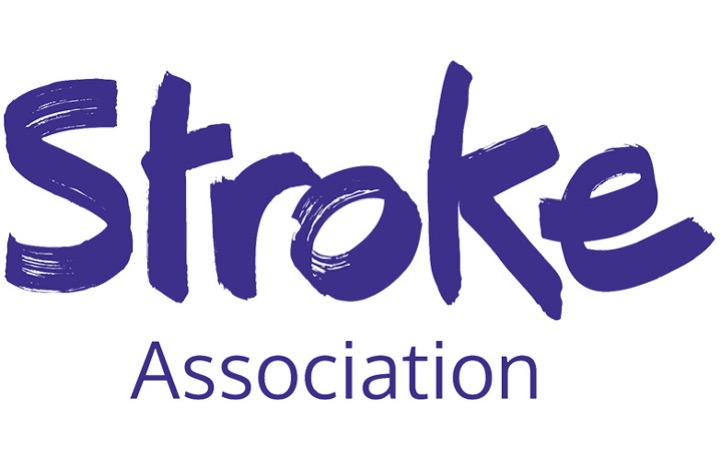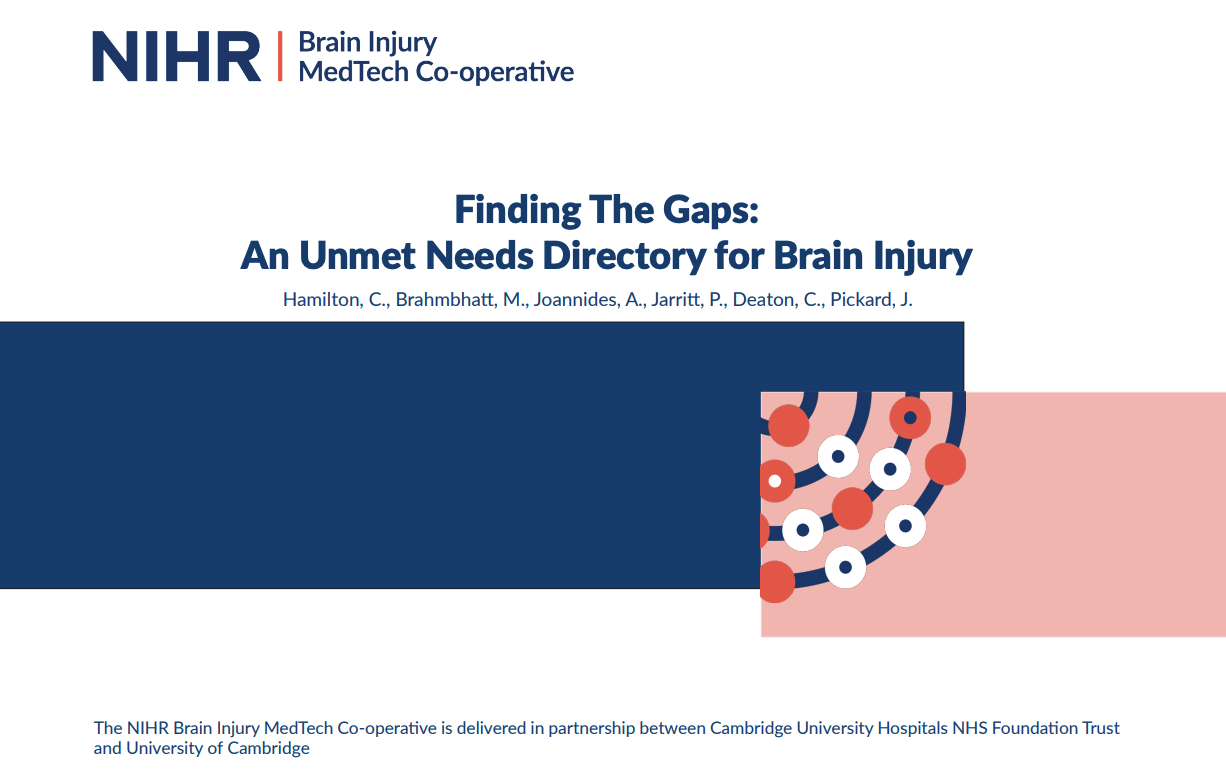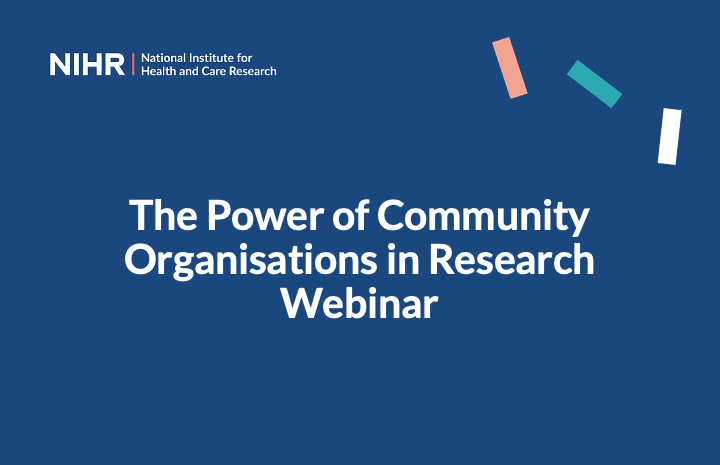
>
| James (0) | You are listening to another podcast from the Health Tech Research Centre in Brain and Spinal Injury, where I've been talking to patients and carers and researchers and innovators and also connecting with some of the many charities that support people and families affected by brain injury. So I'm really pleased that with me today is Juliette Bouverie from the Stroke Association. Welcome, Juliet.Thanks for joining us. |
| Juliet (:34) | Hi, James. |
| James (:35) | So Juliet, perhaps you can start with the big one.What is a stroke? What do we mean by that word? |
| Juliet (:41) | Yeah, so a stroke is when blood flow to the brain is interrupted. So I think it's really important that people understand that a stroke happens in the brain. And obviously, the brain is the control centre for who we are and what we do.
And that's why the disability caused by stroke is so acute. And then there are two main types of stroke. An ischemic stroke, which represents 85% of strokes, is caused by a blockage or a clot in the brain. But then 15% of strokes are caused by a burst blood vessel. But both of them basically interrupt blood flow to the brain. And that's what causes damage. There is also something that people may have heard of called mini strokes, otherwise known as TIAs or transient ischemic attacks. And that's where the symptoms of a stroke last for a very short period of time. But they're often a warning sign that a bigger stroke may be coming. So we always say that a mini stroke is a potential medical emergency and should be treated with the same urgency as a full stroke. |
| James (1:50) | Yeah. So I mean, both of those situations you've described, we've not got blood and therefore oxygen travelling to areas of the brain. So that part of the brain, does that it just dies?
Is that what causes the effects of the stroke? |
| Juliet (2:04) | Yes. So if there's a bleed, then blood in the vessels in the brain is obviously kind of very dangerous. And that tissue can generally not be salvaged.
However, with a blood clot, basically, the kind of blood flow is temporarily stopped. So the trick is to restart the blood flow. And that happens in two main ways with ischemic strokes. The first is stroke patients can be given clot-busting drug it’s called thrombolysis. And that then dissolves the blood clot, then releasing blood flow back to affected area. The other treatment, which is a kind of miracle treatment, it's extraordinary, is called thrombectomy. And that's where a blood clot is physically sucked out of the brain. And what happens is a sort of wire mesh called a stent is inserted up through the groin into the main artery of the brain, it effectively clips onto the blood clot, and then it pulls the blood out. So both have the same effect, which is that that blood flow is then kind of restored. And the trick is to salvage as much tissue as possible. And that's why you have to act with real urgency. So we talk about time is brain. And that's because about 2 million blood cells are kind of lost, but every second that a blood flow is interrupted. So it's really, really important that people call 999, they get to hospital quickly, they get into a brain scan quickly, because a brain scan is the only way to distinguish between the two types of stroke. And then they get the right treatment. |
| James (3:42) | Okay, what it is. Yeah. And you mentioned that the thrombectomy there, it's worthwhile just pausing for a moment to think about that.
Something is inserted into one of the major blood vessels in your leg, usually in the groin, they steer it all the way through those blood vessels up into your brain. Wow. |
| Juliet (4:00) | It's kind of extraordinary, because there are 100,000 strokes, approximately every year, and about 15,000 people will be eligible for a thrombectomy. And they're the people who have the biggest blood clots, because the blood clot needs to be of a certain size, for this device to be able to kind of clip onto it. But it kind of is extraordinary, because patients often have the procedure under a local anaesthetic.
And then literally within minutes of the blood clot being removed, patients are often able to regain mobility, speech, and some are discharged, you know, 24 hours later. But the reality is that, you know, it's such a shock having a stroke, it comes out of the blue, it's very, very sudden. So most people will still have some ongoing support needs. So quite a lot of people are traumatised by having a stroke, they may have survivor guilt, they may have ongoing kind of anxiety, sometimes for some people that can tip into severe clinical depression. And for some people, they will still have residual mobility challenges, or speech and communication challenges, all of which are affected by where the clot was in the brain. So most people still need ongoing rehab. And the shocking thing about thrombectomy is the first randomised clinical trials for thrombectomy were 20 years ago. The global evidence of thrombectomy is it's incredibly effective, but also cost effective, because it reduces the ongoing disability. But it's just not available everywhere. So NHS England set a target in the NHS long term plan for up to 10% of stroke survivors to be getting thrombectomy by March 2028. And still, at this point in 2025, it's only just over 4% of people who are getting it. And what you see is a massive, you see massive regional disparities. So in London, if you have a stroke, you're eligible for a thrombectomy, you've got a good chance of getting it. About 10% of people in London get it, but in other parts of the country, it can be down to 1 or 2%. So we've been running a campaign at Stroke Association calling for 24 seven access to thrombectomy and saying this is not, these regional inequalities are not acceptable. |
| James (6:28) | Yeah, and I guess, well, you sort of mentioned that, you know, the impact of this ongoing care, it makes financial sense to make this available. If we treat people much more quickly, they're much less likely to need that really long term rehabilitation. Hopefully, we get more people back into function much more quickly. |
| Juliet (6:46) | You're so right, James. I mean, we know early action when somebody suspects they have a stroke, early diagnosis, early treatment, early and high dose rehabilitation makes a massive, massive difference. And I always talk about stroke as being an investable proposition.
Yes, you've got to invest upfront to make sure that the urgent and emergency care pathway and the pre-hospital pathway is really slick and quick. But then if people are getting those lifesaving treatments, they massively reduce the disability that people experience. They may not eliminate it, but they will reduce down the impact of them. And that in turn reduces ongoing need from the NHS. It reduces the demand on social care. It means people aren't living lives in nursing or residential homes, costing their families millions of pounds. Do you know what I mean? It's really cost effective. |
| James (7:39) | Yeah, absolutely. And folks who want to hear more about this, listen to the previous episode where I spoke to UKANIF and the health economist who produced a report on UK economy cost of acquired brain injuries. You can pick up more of that stuff there.
You mentioned being quick. So that obviously just to this FAST acronym that I think the Stroke Association helped to develop a few years ago now. And that's really isn't it about recognising that you or somebody you've seen might be having a stroke. Can you talk us through those letters? |
| Juliet (8:09) | The actual acronyms stand for face, arms, speech, time. So face, so if you see somebody's face kind of drooping. Arms, if somebody is struggling to lift their arms or they have weakness in their arms.
Speech, they're struggling to kind of make sense or recall words or numbers. And then the T stands for time, act fast, call 999. And we really are encouraging people to still call 999, even though there's pressures on the ambulance service at the moment. It is important that you're conveyed to hospital in an ambulance because then you're fast tracked through emergency departments. You're seen quickly by a stroke specialist team. You get the brain scan and the treatments more quickly. And now what's happening, which is exciting, is that if people are presenting at home and the paramedics see them with FAST positive symptoms in quite a lot of parts of England, there's a video triage service that's being set up between the paramedics and the stroke consultants in the hospital. So the stroke consultant can actually see the patient, talk to them and then can make sure that they're conveyed to the right hospital and that everything is lined up. But it's not happening everywhere. |
| James (9:14) | Hopefully we will start to see that kind of improve as things move forward. So the Stroke Association, your role is what, is it to support people who have been through stroke and their families and help them out? |
| Juliet (9:27) | Yeah. So the primary thing that we do is provide personalised and lifelong stroke support. And we do that through a fabulous website, which has really high quality information and support resources for patients and their families.
We have a great stroke helpline staffed by stroke specialists open Monday to Friday and Saturday mornings. Again, available for everyone in the UK. And then we also have local face-to-face services, but only where we're commissioned. And that's when stroke support coordinators visit stroke survivors in hospital, go and do follow-up, provide follow-up support to take them on a recovery journey. So yeah, the main thing that we do is stroke support, but we also do campaign and influence for policy and system change. And we also fund research because research is so vital to create those kinds of clinical breakthroughs. |
| James (10:24) | Research is something that I wanted to sort of pick up on. Obviously the Health Tech Research Centre is all about supporting researchers and innovators who are doing stuff around brain injury. Are there any sort of specific projects that you are supporting at the moment in terms of research?
And is it about identifying new treatments for stroke or recovery after, or is it right across the whole pathway? |
| Juliet (10:45) | Yeah, so we do support research right across the whole pathway. And we did a piece of work with something called the James Lind Alliance, where we identified the big unanswered questions in stroke research. So that influences what we fund.
And we've got some quite exciting studies underway. There's probably one that I would kind of mention because it really captures the public imagination. We're working with the University of Birmingham who are developing a lateral flow test for stroke. So this is testing whether through saliva you can identify somebody as having a stroke and potentially saliva can distinguish between stroke and other seizures. So we're looking at a saliva test compared to a blood test compared to urine tests. What is the best kind of most cost effective test to diagnose stroke? So if say a lateral flow test for stroke is proven to be effective, I mean that would be a game changer because it would be simple and cost effective to administer. |
| James (11:47) | Yeah, and that sort of area of biomarkers we're hearing a lot about in all different kinds of brain injury because it just promises to be quick and cheap and easy and direct people to the right place at the right time. Yeah, that's fantastic. So one of the things that I'm in charge of at the Health Tech Research Centre is patient and public involvement in research.
Do you get people with lived experience to come on to these research committees in that kind of way and giving their experience to inform the kinds of projects you fund and how they work? |
| Juliet (12:16) | We absolutely do. I mean our current research strategy really prioritises patient and public involvement in research because it is that lived experience that helps to ensure that any research kind of methods take into account what matters to stroke survivors but also people with lived experience are the people who are best able to say these are the challenges and problems that we experience. These are the things that would really make a difference.
So we make sure that people with lived experience are involved in all of our research processes, in our research funding panels. We don't award research unless we're confident that the patient and public involvement angle is strong and we're going to strengthen that even further as we're about to launch early next year an updated research strategy for the Stroke Association. |
| James (13:11) | Grand, and I guess that means that you make better use of your funds, right? You're directing things towards unmet needs and reflecting the things that those patients and their families really want to see changed about their treatment. |
| Juliet (13:24) | Yeah, I mean co-design really matters because who are the people who best understand what it feels like to live with a stroke? Of course it's stroke survivors. They're experts by experience and I think it's particularly important with, I don't know, technology driven products for example.
We have a lot of kind of technology or medtech firms that come to us with a solution saying can you now promote this to stroke survivors and the first question we always ask is well how are stroke survivors involved in the design of this proposal and if they weren't then chances are it's not going to work. |
| James (13:56) | Yeah, certainly I've met people who've said I've got a great app, yeah but does anybody need it? Does anybody want it? And that's the sort of questions that we want to push forward.
So in terms of that kind of technology, are you aware of interesting kinds of technology which enable for example remote rehabilitation? We know that the 10-year plan for the NHS is to get people out of hospital and treated in the community and at home so it seems that that sort of tele-rehab thing is kind of an obvious way to do that. Is that sort of stuff coming in that people are using already? |
| Juliet (14:30) | Yeah, so I mean you're right, Covid gave us a wonderful example to kind of test online and tele-rehab didn't it and we are now exploring something called NROL which is neuro-rehabilitation online because the early studies indicate that actually for some patients, not for all patients, but for some patients online rehabilitation is more convenient, stops them having to travel, it's more flexible, it can be equally personalised, you know digital tools like I do park run most Saturdays, you know I love the data, we're all motivated by kind of data and points and prizes, all those things can kind of keep people going because often straight rehab is boring you know and you want to kind of feel like you're achieving goals and so we're looking at how we might scale NROL but I think there are other things that we can be doing in that digital and technology space and one of the things that we really welcome in the 10-year health plan for England and we are a UK charity so this is England only at the moment is something called Diagnosis Connect where the government has committed to automatic referral at the point of diagnosis for people with long-term conditions to relevant national and local charities and obviously this would be a complete game changer because we know that charities provide brilliant support and information, their challenge is actually reaching everyone so most people are diagnosed in the NHS so if you can get all those newly diagnosed patients plugged into the fantastic support and information that charities like ourselves provide that would be a complete game changer. |
| James (16:17) | Yeah and hopefully that will reduce that sort of falling off the cliff edge. The other thing we find quite a lot is the move from health to social care, there's poor transfer of information and stuff against people, we know that happens a lot in traumatic brain injury, is it a similar pattern in stroke if people can't look after themselves, they can't go home and they need to go into long-term care, is that transition smooth in stroke or is it as in other brain injuries a bit kind of difficult sometimes? |
| Juliet (16:44) | It's often complex, I mean you often see people waiting in a hospital bed longer than is ideal because they're waiting for a social care package. One of the things that is written into national policy for stroke is an integrated model for community stroke rehabilitation where stroke rehabilitation is provided by a multidisciplinary team including the voluntary sector, including social workers so that people's needs are really met in a personalised way. But yeah I think the other challenge is people in nursing and residential homes don't get the kind of dose and intensity of rehabilitation that maybe other patients get in the community, so there's something about how you ensure that everyone regardless of where their home is, is getting equal access to community rehabilitation and sadly community rehabilitation I'm sure lots of your other speakers will have said this is so underfunded, under-provided for, under-prioritised, so hopefully as part of the new emphasis on neighbourhood health we will start to see that getting greater prominence. |
| James (17:54) | Yeah let's hope so and that we get people in the right place. I've seen people with traumatic brain injuries in old people's homes, they don't belong there, they're not given the care and support that they need, and I wanted to sort of pick up on that because often stroke is thought of as being a thing of the elderly, but that's not the case at all is it? People can have strokes at any age. |
| Juliet (18:13) | You're absolutely right, I mean it is really interesting, all the research that we've done with the public indicates that people think stroke only happens to older people. The data is that one in four people of working age have strokes and worryingly there is a big increase in strokes in people aged 50 to 65 and the single biggest cause or risk factor for a stroke is high blood pressure. That causes over 50 percent of strokes and you will know this, high blood pressure is caused by a number of things, you know unhealthy lifestyles, smoking, drinking, eating fatty foods, not being physically active, but there is also some evidence that it can be caused by stress and pressure.
So I think that trend of kind of 50-year-olds experiencing stroke is one we're watching carefully. We don't fully understand the reasons why there's such an increase, but it is a marked and significant trend. |
| James (19:17) | Yeah, that's kind of concerning. One would hope that things would be moving the other way, people seem to be drinking less, they're certainly smoking less than they were sort of 20-30 years ago, but it's kind of worrying that we're seeing a trend moving in the opposite direction. |
| Juliet (19:33) | Yeah, well I mean I think people under 30 are very good at looking after their physical health. I was listening to something on Radio 4 this morning talking about the huge increase in the number of people under the age of 28 who are gym club members and the trend in that generation for keeping physically active. I mean I'm in my 50s, could I confidently say that my peers, all of my friends, all of my generation take equal account of the health?
I'm not so sure. And the problem with high blood pressure is that it's often unrecognised, it can be a silent killer. So our big message on that is you can get your blood pressure checked in a lot of places now, you don't just have to get it checked by your GP, you can get it checked by a nurse practitioner, a lot of pharmacies now offer free blood pressure checking, you can buy monitors now from Amazon that are perfectly good that only cost £20. I'd really encourage people aged over 50 to just regularly monitor your blood pressure and if it is over the recommended limit, for goodness sake get yourself to the NHS who can formally diagnose you. |
| James (20:41) | Yeah and give you some advice on changes to diet and lifestyle which we know can have a really quite dramatic effect on things like high blood pressure. |
| Juliet (20:50) | Absolutely and these are things that are within our control, age is clearly not within our control, age and ethnicity are risk factors for a stroke, but healthy lifestyle, getting your blood pressure checked, looking after yourself, reducing stress, all of those things are things we can influence. And you know I would say to anyone, you know strokes are often horribly disabling. When people think of strokes they think of people as having paralysis or spasticity or mobility challenges, that is true but you know a third of stroke survivors have serious speech and communication difficulties, a lot of stroke survivors have difficulties, challenges with cognition and memory, depression, anxiety, I could go on.
So I would just say strokes are serious, act really quickly if you spot anyone having the potential symptoms of a stroke but you know do take every effort to try and avoid them. |
| James (21:47) | Well that seems like good advice on which to wrap up our conversation Julet.. Thank you ever so much for finding the time to have a chat to us. I will put a bunch of links under this podcast to the Stroke Association website and other places where you can find some support.
You will also, if you listen back through previous episodes, hear from Greg who had a brain bleed, a hemorrhagic stroke, one of the kinds that we talked about earlier on. You can learn a bit about his story by listening to that. And do check out all of the other episodes in this amazing series and thanks for listening. Goodbye. |
More like this:
Directory of Unmet Needs
Directory of Unmet Needs In 2016, it was estimated that Traumatic Brain Injuries (TBI) alone result in [...]
Patient Involvement Podcast – Kavita Basi
Listen to James Piercy talk with Kavita Basi, VP, Author, Speaker, podcaster and Ambassador. Kavita faced a [...]
NIHR – The Power of Community Organisations in Research Webinar
Researchers in larger research communities can often have difficulties including smaller communities in research. Often this leads [...]



